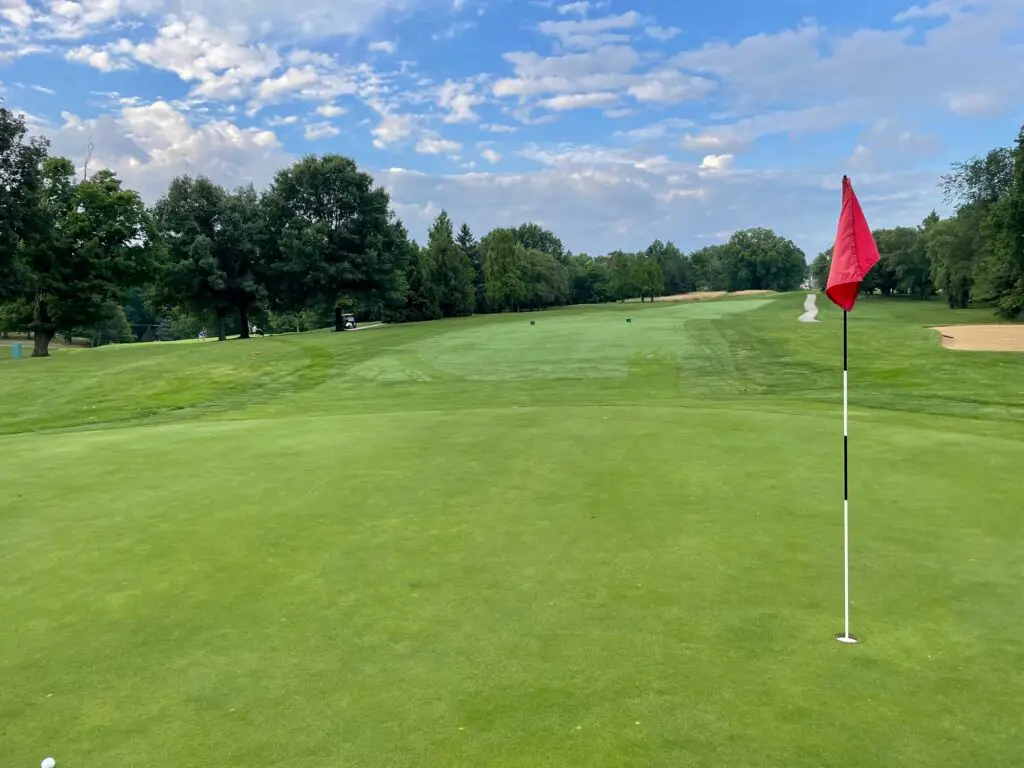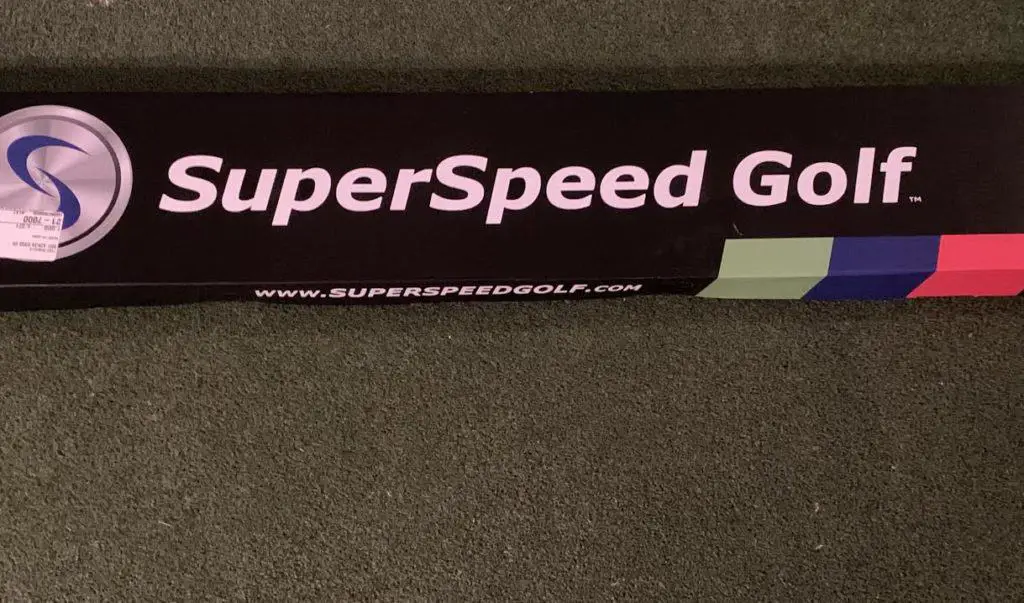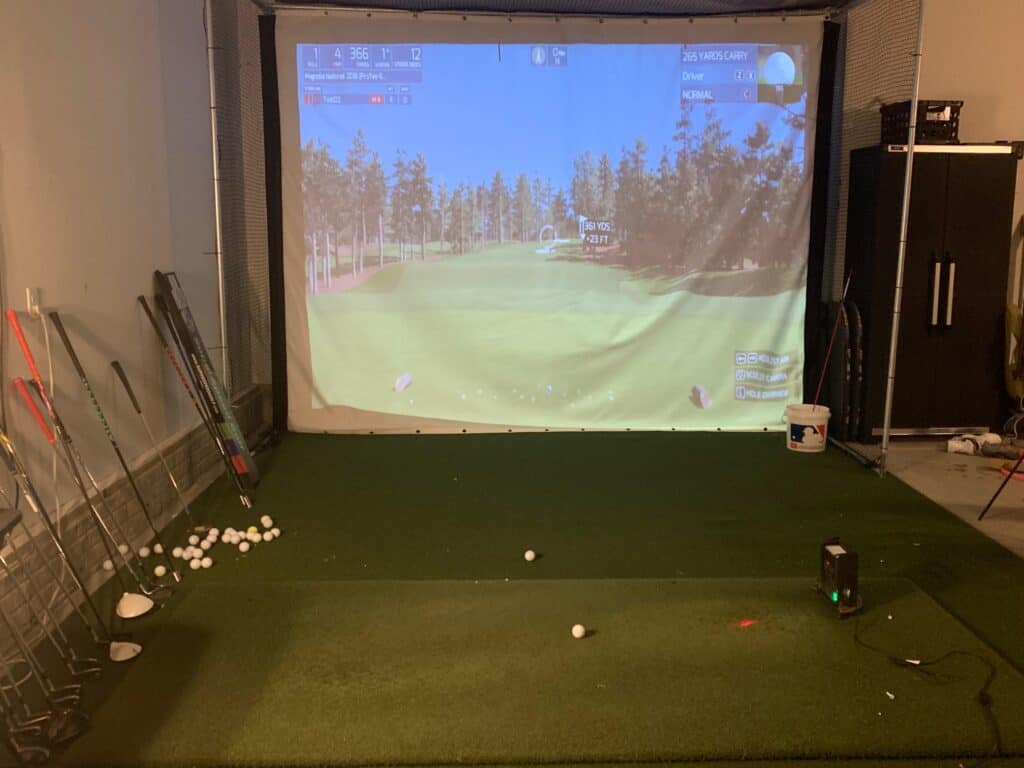Many golfers start out each season with great hope.
This is the year they are going to break 100, 90, 80 or even shoot par for the first time.
The excitement of a new season brings this hope, but oftentimes the hopes are destroyed over the first several rounds of the season. The same old issues arise, so golfers often look to new equipment, new swing thoughts or possibly they take a lesson.
But, what is really holding golfers back from improving? Why don’t golfers get better from one year to the next?
Below, I dive into many of the top reasons golfers are not getting better.
About 5 year ago, I set out to break par more often. My average scores ranged from 74-84 with the occasional round right at par. My average score now ranges between 68-78. This is about a 6 shot reduction on average. My most recent scores have been a 69, 70, 69, and a 73 at 3 different courses. During this stretch I have made 17 bridies and 1 eagle.
So what was the formula? We will start with the issues and then turn to the solutions.
Why Am I Not Getting Better At Golf
- Lack of a true assessment on their game
- Lack of quality practice
- Playing golf swing vs playing golf
- Poor shot selection
- Unrealistic expectations
- Lack of swing speed
- Lack of quality contact
- Lack of a stock shot
- Playing scared golf
- No game plan
To get an idea where I am with the golf swing, I will provide what I believe are the key fundamentals of golf:
- Low Point Control – The ability to strike the ball solid on a regular basis.
- Controlling the Curve – The golfer is able to hit a stock shot that starts down the intended start line with a predictable curve
- Speed and Distance – The golfer must have enough swing speed to play the courses he or she is playing most often.

Issue #1: Lack of a true assessment on their game
When talking with a lot of golfers, I will hear, I can drive the ball 280, I just don’t score. Golfers, unfortunately, sometimes think they are better than they are. They lack a true assessment of where their game is. There are some major areas that need assessed: Driving, Iron Play, Wedge Play, Chipping and Putting
What to work on at the driving range!
Solution #1: Play 5 Rounds – Track Everything
Commit to playing your next 5 rounds and keeping a true score, takes notes of every bogey or greater you make and every birdie you make. Write the reason down for each bogey, such as, poor driver or 3 putt. Over the 90 holes that you play, figure out what 2-3 areas are causing you the most bogeys.
Some potential areas include:
- You frequently hit your driver into the trees and don’t have a clear shot.
- You often have 180 yards or more on approach shots
- You can’t chip a ball close enough to save par
- You 3 putt greens
- You frequently miss greens from 125 yards and in.
Once a golfer has some idea of where the shots are being lost, it is time to come up with a plan to help get better in these areas. See Issue and Solution #10 for how to set up a plan.
Issue #2: Lack of quality practice
Many golfers practice a lot, but unfortunately, their practice is not making them better. This can often be blamed on simply hitting balls at the driving range and getting stuck in block practice mode. They hit 20 drivers in a row or 20 7 irons in a row, thinking they might find the “secret” or “feel” to their golf swing that will change their game forever.
Solution #2: Work on specific skills
Make your training sessions about working on specific skills. Here are some examples:
- Keeping your driver in plan
- Hitting your driver further
- Playing a stock shot with your irons
- Controlling distance with your wedges
- Making solid contact
If you build these skills above, you will get better. Many of these skills above are the basics of playing your best golf yet.

BONUS Solution: Play Golf Year Round
Golf is a game practiced more at a practice range vs the golf course. But what if you could play golf year round regardless of the weather or access to a golf course?
The number one change in my game that started 5 years ago was the building of a golf simulator setup in my garage. I have now played close to 1000 rounds of golf on my simulator alone over the past 5 year. This has been the number one thing to help my game improvement. While I am able to work on low point control, stock shot and swing speed, playing actual golf holes is incredible and helps you all around!
Here are some links to check out. I would highly recommend the SkyTrak with the TGC software as your main setup.
Issue #3: Playing golf swing vs playing golf
Too many golfers are trying to build an aesthetically pleasing swing that looks perfect. They get out on the course and are thinking about specific positions in the golf swing vs the shot that they are faced with.
They get so caught up in what their swing is doing that they lose focus on the task at hand. Which is to actually hit a quality golf shot. If you want to work on the aesthetics of your golf swing, head to the driving range, even though I would promote building skill vs working on how your swing looks.
Why does my golf swing fall apart?
Solution #3: Play Golf
Enjoy the challenge of playing golf vs playing golf swing. Keep your 9 different key swing positions to the driving range of working in front of a mirror. Instead focus on the shot at hand and take joy in hitting a quality shot.
I would highly recommend Shawn Clement if you are struggling with this in your game.
Issue #4: Poor shot selection
An entire book could be written on this topic. Golfers tend to give themselves too much credit and take on overly difficult shots, resulting in devastating outcomes. For example the 220 yard shot over water on a par 5. Instead of laying up and hitting a 100 yard wedge onto the green, they attempt the hero shot and hit it in the water, take their drop, hit is on and 3 putt for a bad score.
What is the most important part of the golf swing?
Solution #4: Understand your game
Understand what you can actually do and be realistic. Plotting your way around a course can bring some fun golf and keeps you in the hole and gives your game a chance for par on just about every hole. Stop forcing those 3% shots and hit the high percentage shot.

Issue #5: Unrealistic expectations
A golfer is standing at 150 yards and hits it on the green to 30 feet. They slam their club down and are angry they don’t have a 10 footer for birdie. They become angry and end up 3 putting and head to the next tee and swing way too hard hitting their tee shot out of bounds. They have just taken a pretty decent shot to 30 feet from 150 yards and have lost 3 shots because of unrealistic expectations.
How to keep your driver in play!
Solution #5: Manage expectations
Did you know that the proximity to the pin from 150 yards on the PGA Tour is 25’ 3”? I would highly recommend studying this chart and re-establishing your expectations. You might be surprised to see some of the numbers involved. The other one that caught my eye is 18’ 5” from 100 yards.
Issue #6: Lack of swing speed
In order to reach certain levels in golf, the swing speed must get higher and higher. Here are some quick states according to golf.com on average swing speed by handicap:
- Scratch Golfers – 106 mph driver swing speed average
- High Single Digit Handicap – Right around 97 mph driver swing speed
- Average Golfers – 93 mph driver swing speed
You might be surprised what your actual swing speed is. I would highly recommend measuring your swing speed and then getting to work on training for speed.
Solution #6: Train for Speed
Training for speed is a great idea and one worth exploring!
If you are going to train for speed, I would highly recommend the SuperSpeed Training System.
Gone are the days of simply being content with the distance you currently hit your golf ball. Many older golfers have proven over the past several years that an increase in swing speed is possible.
There are training systems to help you get your game to the next level and distance is arguably the fastest way to make this happen!
My number one recommendation is to check out SuperSpeed Golf and their protocols to help you find a safe way to increase your swing speed.
I spent many years wondering how I can increase my swing speed. When I was playing junior golf, we weren’t fortunate enough to have some of the training aids and knowledge that is now available. Smart people have studied the golf swing and have created training aids and protocols to help all golfers increase their distance!
At around the same time, the statistics from the PGA Tour have become more clear and the importance of speed is acknowledged by many to be a key to being the best on the PGA Tour.
Within the past several years, there have been several products hit the market to make speed gains possible. While many people for many years waited for the latest driver to come out to gain an additional 5-10 yards, you can now do this even with your current clubs.
Did you know that with the SuperSpeed Training System you can gain 5-8% increase in swing speed as early as the first training session? This would allow you to gain somewhere between 10 and 30 yards depending on your current swing speed.
The SuperSpeed Training System is based on three different swing speed sticks all weighing at different weights. There is a green club that is 10% lighter than the average driver, the blue club which is 5% lighter and the red club which is actually 5% heavier!
Following their prescribed protocols the golfer completes the training every other day. The total time to complete most of their protocols is between 10-15 minutes. Most people can find the time to make this happen. The golfer will also need a swing radar to measure their progress.
The science behind the SuperSpeed Training System is based on overspeed training. Overspeed training has been around for several decades now and has been used by olympic athletics in the sport of Track and Field.
The science behind this overspeed training is based on the premise that your brain will only allow your body to move as fast as it feels it can stop safely! So, you get to work and swing the clubs as fast as possible, retraining your brain to allow you to swing your driver faster.
For more permanent results, the golfer should continue these training protocols for several months. The initial 5-8% is great and can become more permanent with the right length of training. The golfer can expect to continue to break down barriers every several months at a 1-2% increase.
My own experience has been an increase of 7-10 miles per hour on average from between 98-101 all the way up to 106-109. My goal is to hit the PGA Tour average of 113 mph in the coming months. I will continue to train every other day and watch in amazement as I am hitting drivers longer now than ever before!
Phil Mickelson (a senior golfer now) has been known to increase his swing speed in the past year or so and is close to 120 miles per hour in his swing speed. There are potential results for golfers of all ability levels and age!
Check the current price on SuperSpeed Golf System, here!
| Original Swing Speed | After 4-6 Weeks | New Carry Distance | Total Distance |
| 95 | 102 | 245 | 265 |
| 100 | 108 | 259 | 279 |
| 105 | 113 | 271 | 291 |
| 110 | 118 | 283 | 303 |

Issue #7: Lack of quality contact
The best golfers strike the ball solid 99.9% of the time, the worst golfers might struggle to strike it solid even 50% of the time. This is a result of poor low point control. If you want to flush shots all day long, you have to work on your low point control.
Solution #7: Use the low point control drill
The Drill: The Low Point Control Drill
- Take some yard paint and paint a 1-2 yard long line.
- Setup with 55% of your weight on your front side.
- Try to hit the target side of the line and see how many times out of 10 you can do this successfully!
- Repeat this drill every day for a month, tracking your progress and your ability to to this successfully in trials of ten.
- You may need to start with half swing and progress to full swings.
If you are struggling, put more weight forward and work on keeping your head still to help control the low point in the swing.
Continue to use this drill frequently until you are in the upper 90% in the controlling the low point. Focus on making that divot start after the ball with the irons.
Over the course of playing the game more and being specific in your drill work, you can get better at low point control, which will help you through the entire golf bag.
Issue #8: Lack of a stock shot
Do you know which way your ball starts and then curves? Are you able to hit this shot 90% of the time? The key to consistent golf comes down to low point control and a stock shot. The stock shot is a shot that will consistently start on your intended start line and curve in a predictable pattern. For example a draw or a fade.
Solution #8: Develop a stock shot
Here is a wonderful drill you can use to build a stock shot:
- At the driving range, set up an alignment stick about 6-8 yards in front of you, straight down your target line.
- If you have a second alignment stick, set the stick 3-4 feet right of the first stick (for a draw) or left of the first stick (for a fade).
- Complete your initial assessment see how many times out of 10 you can start the ball to the right or left of your target. Pick one side and measure your game at this point.
- The goal is to eventually get 7 out of 10 shots to start to the correct side and draw back towards the target.
*I enjoy doing this drill in my golf simulator setup as I can see the curve of the ball and the spot where my ball hit on the impact screen. However, it can easily be utilized at the driving range. See below for more about my golf simulator setup and the impact it has had on my game!

Issue #9: Playing scared golf
Golf can be difficult. It is even more complicated when you are scared and full of tension.
Solution #9: Practice often
Practice as often as possible and get good at low point control and a stock shot. This will help you ease your fears of something bad happening and give you the confidence you need to become a solid ball striker regardless of the situation you are faced with.
Issue #10: No Game Plan
You need a game plan to get better. This starts with monitoring your game by taking detailed notes after every round or every 5 rounds. Right down your strength and weaknesses after every round and review every 5 or so rounds.
Solution #10: Develop A Game Plan
There are some keys to developing a game plan:
- Assess each round
- Assess each practice session
- Work on 1-2 skills at a time during your practice sessions
- Take as detailed notes as you are comfortable with about 3 putts, drivers in play, proximity to pin, etc.
- Be specific in your practice session and work on a skill detailed above

Final Thoughts: Have Fun!
Don’t forget that golf is supposed to be fun! Enjoy the journey and embrace the challenges. If golf was easy, it wouldn’t be as fun. Part of what makes it so fun is the challenge of the physical, emotional and mental state of the golfer every time they tee it up! Love the journey and enjoy it greatly!
My Secret To Golf Improvement
Let’s face it, in order to get really good at golf, we must practice frequently. About three years ago, I made the leap and invested in a golf simulator build for my garage. I went with a SkyTrak Launch Monitor and the TGC software and can now play over 100,000 courses including Augusta, Pebble Beach, Bethpage Black, Whistling Straits. St. Andrews and many other of the top 100 courses in the world.
This golf simulator setup, which is more affordable that you might imagine, has been a game changer. I can now play golf everyday of the year regardless of rain, snow, cold weather or time of day. I can practice or play rounds of golf. I can stand in the 11th fairway at Augusta and with the auto-rewind feature I am able to practice my approach shots from various differences.
It is worth checking out through Rain or Shine Golf as they offer some incredible packages along with financing offers that are difficult to beat.
Some direct links to Rain or Shine Golf for pricing and financing:
Take Action – What You Can Do Today to Get Better
What does this mean for you? I believe in the following recipe to get better:
1 – Improve your motion in the golf swing by identifying a golf instructor. Here are some options:
Here is a list of golf instructors that we have reviewed:
2 – Train to swing faster and improve your swing speed. Here are some options:
Looking to gain more Speed and Distance in your swing. Two Options:
3 – Understand course strategy and work to break through your next barrier. Here is a series on breaking through:
We have provided guides on how to break 100, 90, 80 and 70. Check out more below, if interested.
4 – Practice Frequently
Did you know that I build a golf simulator in my garage and have played over 500 rounds of golf on my SkyTrak system? It has been a game changer and one worth checking out. Here are some of my other posts on golf simulators frequently asked questions:
- Is a Golf Simulator Worth It?
- How to Build a Golf Simulator?
- What is the Best Golf Simulator?
- Golf Simulator Accessories?
- How to Build a Golf Simulator for under $7000
- Top 11 Reasons to Buy a SkyTrak
- How to Build a Golf Simulator for Under $1000
- Why Build A Golf Simulator?
- What Space is Needed?
- Can A Golf Simulator Improve My Game?
- How Much Does A Golf Simulator Cost?
- Don’t Forget to Check out our 15 best golf swings of all time.
